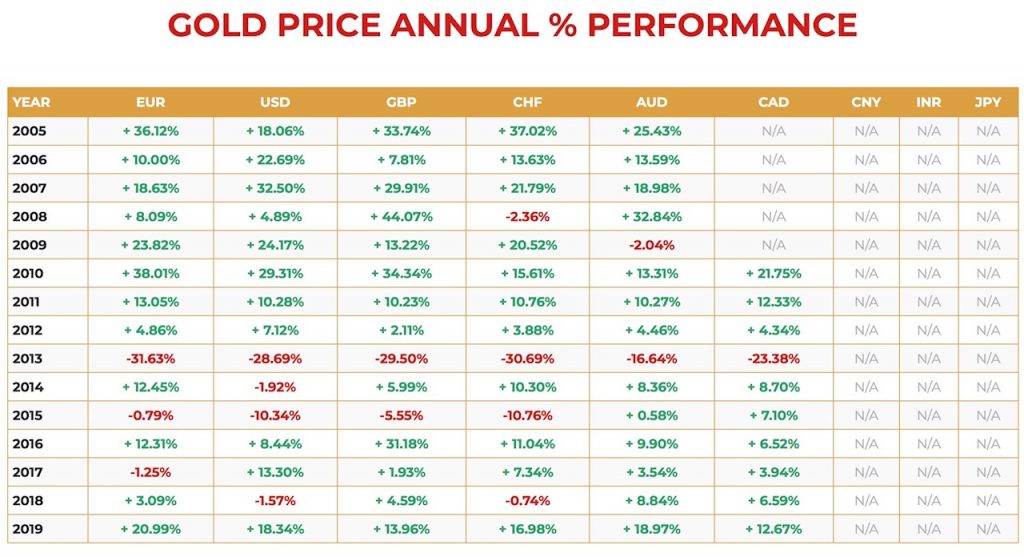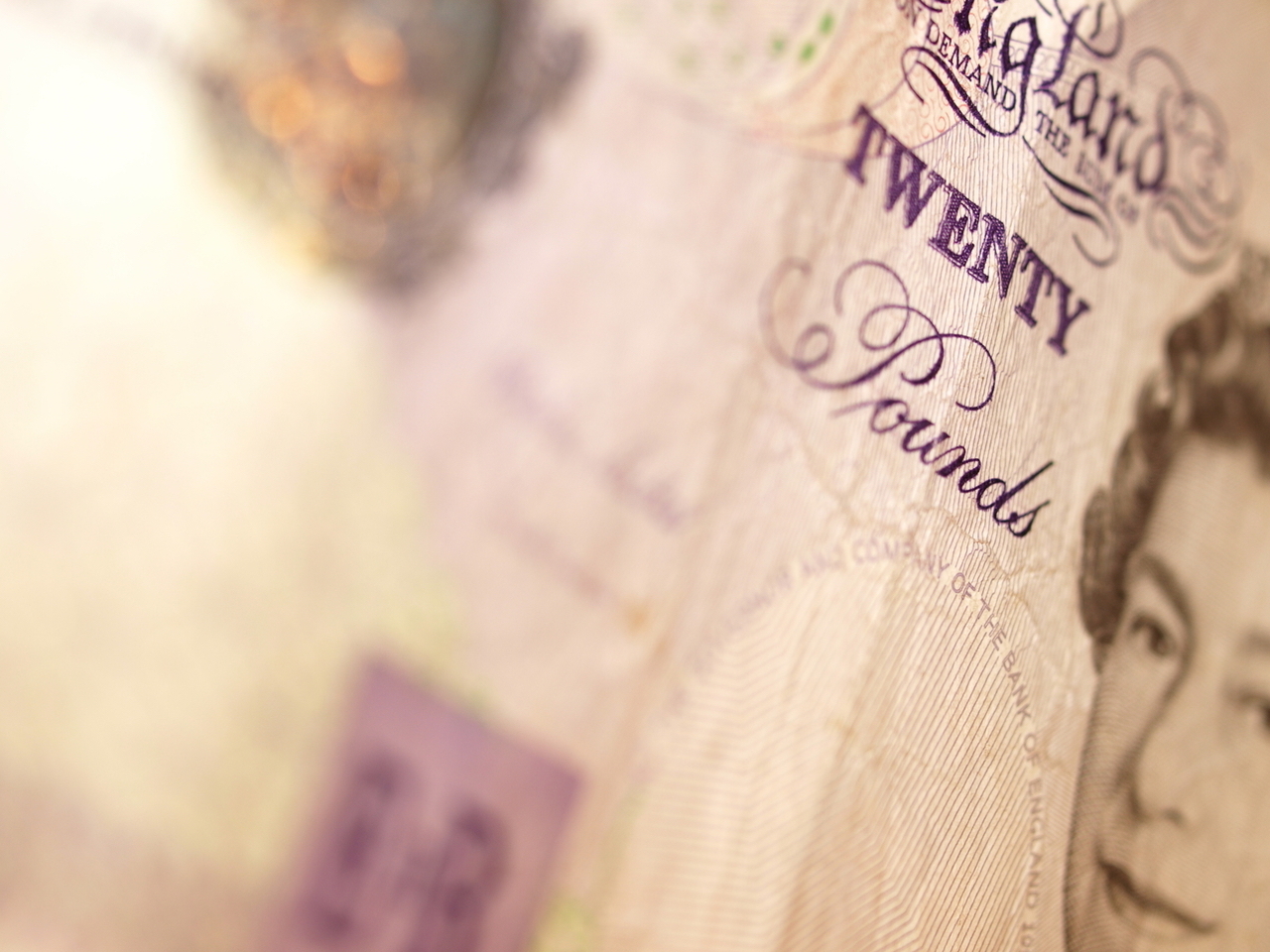Table of Contents
UK pound sterling purchasing power compared to gold

Let’s talk about Inflation.
The inflation rate of the UK pound sterling (GBP) from year 1960 to 2020 is a staggering 1829%. Therefore if you were to buy an item for £1 in 1960 that same item would cost the equivalent of £19.29 in 2020, an annual average inflation rate of 4.97% (source inflationtool.com). Inflation is the slow and gradual killer of paper currency wealth. If you look at the UK pound sterling, then it’s purchasing power has been dramatically eroded over time.
Since Brexit and the Covid pandemic there has been added uncertainty regarding the UK economy, finance sector, lack of inward UK investment, loss of single market and more which all adds to the UK pound sterling’s fall in value.
The rate of inflation is based on the price of a set basket of around 700 goods or services and the rate is worked out by how much the prices of that set basket of goods or services rise or fall (The Consumer Price Index). According to the Bank of England, there is a “specialist team” who collect over 180,000 prices a month to confirm the data. These prices cover everything from the price of a whole chicken to an electricity bill. Once all this data has been correlated, the Bank of England would then announce the current inflation rate.
The Bank of England uses a monetary policy known as ‘inflation targeting’ to try and control the overall rate of inflation. The UK government has set a target of 2% inflation that the Bank of England has to try and maintain by adjusting interest rates up or down in order to keep the inflation rate stable at 2%.
The problem is, due to the current pandemic, the Bank of England has cut interest rates to an incredible 0.1% which is the lowest rate it’s ever been in the Bank of England’s 325 year history.
Where does the Bank of England go from here? Well astonishingly some countries such as Switzerland, Sweden and Japan amongst others, now have negative interest rates. This has never occurred before in history, so we are now in truly unchartered financial waters.
When the value of the UK pound sterling falls, then essentially you can buy less with it, which is summed up by the term, ‘loss of purchasing power’. Government and the central Bank of England who use this fiat currency system, can simply print paper money out of thin air, which means every pound sterling printed or digitally typed into existence is reducing your purchasing power by essentially devaluing the pound sterling.
Gold and silver are different. Self proclaimed gold and silver bugs might say “the Bank of England can’t print gold”, which is a way of highlighting why gold or potentially silver are a better store of value compared to the pound sterling or indeed any fiat currency.
When you track the global spot price of gold and silver, the fluctuations in price are most likely more to do with the value of your currency, i.e. the pound sterling going up or down rather than the real value of gold and silver.
Gold and to some degree silver are usually used as a way to resist inflation, which is also describes as a ‘hedge against inflation’.
The Bank of England has now ramped up quantitative easing (aka printing money) to unprecedented levels, stating total purchases of government bonds now hitting £645 billion as of March 2020. (Source bankofengland.co.uk)
UK national debt.
According to nationaldebtclock.co.uk, the UK national debt is now over £2 trillion (May 2020), which is truly staggering. That equates to around £64,000 in debt per tax paying citizen in the UK.
According to the same site this figure doesn’t even include other liabilities, including state and public sector pensions, therefore, the real figure is more likely over £5 trillion by now (May 2020).
The debt is simply outrunning economic growth. The UK is essentially borrowing much more than the economy can produce.
Since March 2020 the Bank of England has continued to cut the interest rate to almost zero and has introduced a raft of stimulus measures including more quantitative easing, asset purchases, providing billions in loans, and more. As this crisis continues then unemployment will rise, businesses with continue to fail, GDP will fall and the overall economy will suffer.
The power of gold as a store of value.

Source: Gold price annual % performance www.goldbroker.com Goldbroker all rights reserved.
The longer these adverse financial circumstances continue into 2020 and beyond, history shows that all this uncertainty and money printing tends to be bullish for gold. Gold is considered by many as a safe haven asset. Gold has value in itself and is unable to go to zero.
As gold and silver prices continue to rise, this is a clear sign of investor response to fear. Investors will be forced to rush into gold and silver in order to have more chance of preserving their wealth as many paper assets continue to fall.
Over the last 30 years the price of gold in UK pound sterling terms has increased in price per ounce by over 560% (May 2020, see gold price chart on this website). The UK pound sterling continues to lose its purchasing power and the price of gold continues to rise.
This starts to reveal how unstable fiat money and the pound sterling really is.
As of May 2020 the gold price in pound sterling terms has been increasing over the years, hitting record highs. With this in mind, there is still strong support and potentially more upside for gold. With further uncertainty in the equity markets, and no sign of the markets returning to normal any time soon, then it’s likely that more and more investors will rush to gold and potentially silver.
If you look back at the financial crisis of 2008 there was a huge rally on the price of gold. To quote Mark Twain, “History doesn’t repeat itself but it often rhymes”.
Investors may look at the bond market. Bonds are traditionally used as another form of safe haven for wealth.
Due to falling bond yields this may no longer be a viable, because of these bonds having very little upside while still having some degree of counterparty risk.
Gold and silver, therefore, could be one of the best ways to truly diversify any investment portfolio, acting as an insurance policy during these uncertain times.
In simple terms gold is a strong and reliable store of value, retaining purchasing power over time, and does not have the inflationary pressures of the UK pound sterling and other global fiat currencies.
During this pandemic and financial crisis, there will be increasing pressure on the UK government to offer financial support to all sectors which will in turn will create continued stimulus packages, quantitative easing, loans and ongoing financial support to business as well as the general population as a whole. All this signals increasing price gains for gold.
Could this be the time to increase or diversify your investments into gold? Before long, gold could become more and more unobtainable due to continued high demand.
BullionVault lets private investors around the world access the professional bullion markets. You can benefit from the lowest costs for buying, selling and storing gold and silver.
4 Grams of FREE Silver on Sign up! VISIT BullionVault
Disclaimer: The articles or blog posts on this website are for general information/opinion purposes only and does not constitute either goldandsilveruk.co.uk or the author(s) providing you with legal, financial, tax, investment, or accounting advice. You should not act or rely on any information contained in the articles without first seeking independent professional advice. Care has been taken to ensure that the information in the articles are reliable; however, goldandsilveruk.co.uk does not represent that it is accurate, complete, up-to-date and/or to be taken as an indication of future results and it should not be relied upon as such.
The site goldandsilveruk.co.uk will not be held responsible for any claim, loss, damage, or inconvenience caused as a result of any information or opinion contained in these articles or blog posts and any action taken as a result of the opinions and information contained in these articles or blog posts is at your own risk. All rights reserved www.goldandsilveruk.co.uk
This website/blog may generate revenue through paid sponsorships, advertising, paid insertions and affiliate partnerships.
goldandsilveruk is a precious metals enthusiast who wants to give authentic, clear, simple, transparent information and opinion to readers. Compensation may influence advertising content, topics or posts made on the blog. However, all paid and/or sponsored content and advertising space and posts would be identified.
All facts and claims made in posts should be independently verified with the manufacturer or provider. If a conflict of interest exists in the content, it may not always be identified.
Changes made to the policy will be identified on disclaimer page and in the general privacy policy and T&C.

